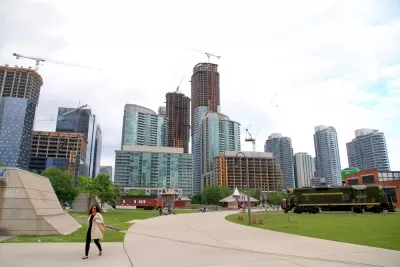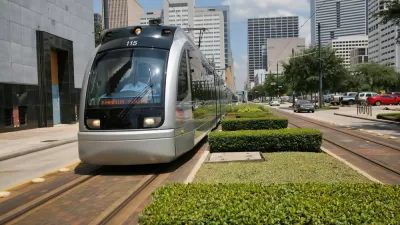It's hard to imagine a policy that so comprehensively acts to create disincentives for sprawl gaining political traction anywhere in the United States.

[Updated 5/23/2016] "With 3.5 million people set to move into the Greater Toronto and Hamilton Area over the next 25 years, the province is promising sweeping changes to manage smart growth and curb urban sprawl that’s crippling the region," according to an article by San Grewal.
Ontario Finance Minister Charles Sousa was joined by three other ministers to announce the "broad new measures the province is taking to properly manage future growth," according to Grewal. Sousa called the growth management strategy historic. The growth strategy is still only a proposal, regardless. "Many of the bold changes which will be reviewed until the end of September, before they can be incorporated into existing legislation," explains Grewal.
Among the proposed changes:
- Dense "pre-zoning" requirements along transit corridors.
- Requiring infill to comprise 60 percent of new residential development
- Increased commercial density to lessen the development of greenfield employment centers.
The article also includes a poll asking for reader's opinions of sprawl. The overwhelming majority of respondents say "it’s about time" the provincial government did something about sprawl.
Mississauga Mayor Bonnie Crombie produced a press release coinciding with the announcement of the growth strategy. The press release describes in more detail the process that produced the growth plan, as well as unequivocally voicing support for planning as the solution to the growth challenges facing the region.
[The post was updated to give proper credit to the current mayor of Mississauga.]
FULL STORY: Ontario setting new rules to end era of suburban sprawl across GTA

Study: Maui’s Plan to Convert Vacation Rentals to Long-Term Housing Could Cause Nearly $1 Billion Economic Loss
The plan would reduce visitor accommodation by 25,% resulting in 1,900 jobs lost.

North Texas Transit Leaders Tout Benefits of TOD for Growing Region
At a summit focused on transit-oriented development, policymakers discussed how North Texas’ expanded light rail system can serve as a tool for economic growth.

Why Should We Subsidize Public Transportation?
Many public transit agencies face financial stress due to rising costs, declining fare revenue, and declining subsidies. Transit advocates must provide a strong business case for increasing public transit funding.

How to Make US Trains Faster
Changes to boarding platforms and a switch to electric trains could improve U.S. passenger rail service without the added cost of high-speed rail.

Columbia’s Revitalized ‘Loop’ Is a Hub for Local Entrepreneurs
A focus on small businesses is helping a commercial corridor in Columbia, Missouri thrive.

Invasive Insect Threatens Minnesota’s Ash Forests
The Emerald Ash Borer is a rapidly spreading invasive pest threatening Minnesota’s ash trees, and homeowners are encouraged to plant diverse replacement species, avoid moving ash firewood, and monitor for signs of infestation.
Urban Design for Planners 1: Software Tools
This six-course series explores essential urban design concepts using open source software and equips planners with the tools they need to participate fully in the urban design process.
Planning for Universal Design
Learn the tools for implementing Universal Design in planning regulations.
Ascent Environmental
Borough of Carlisle
Institute for Housing and Urban Development Studies (IHS)
City of Grandview
Harvard GSD Executive Education
Toledo-Lucas County Plan Commissions
Salt Lake City
NYU Wagner Graduate School of Public Service





























